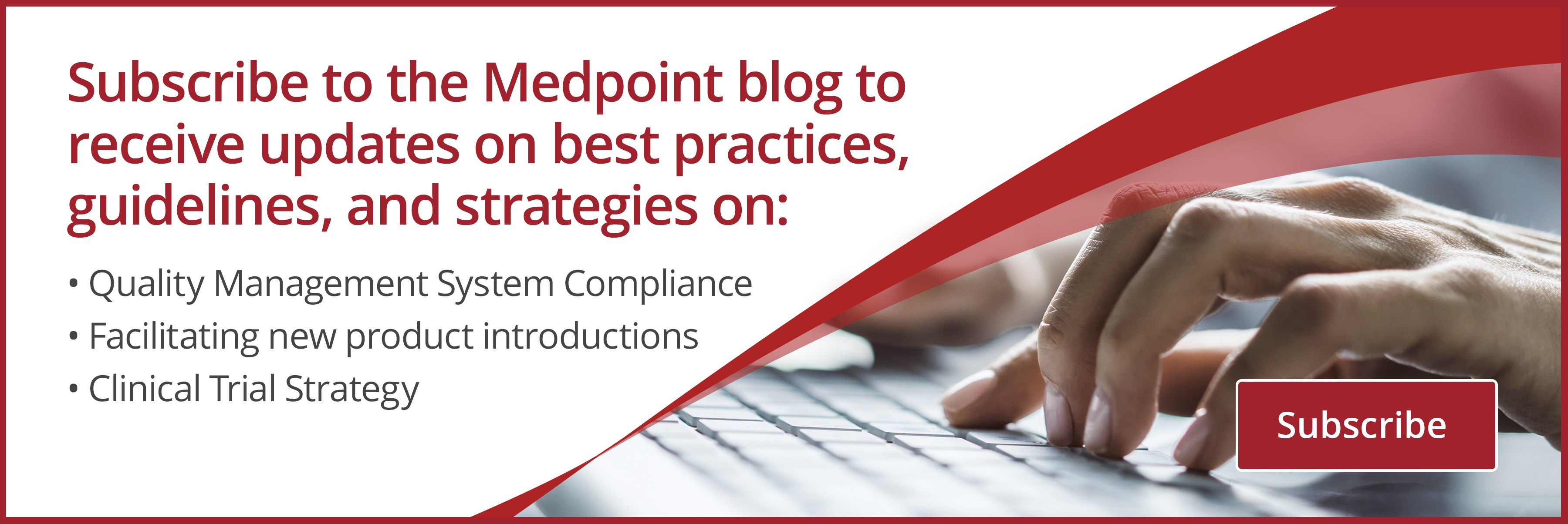Product recalls are an unfortunate part of any manufacturing industry. For medical devices and...
7 Medical Device Trends for 2021
The medical field is continually evolving, and nowhere is that trend more evident than in the realm of medical devices. From wearable medical devices to increasingly smart data infrastructure, technology will take center-stage in 2021. At the same time, regulatory bodies like the US Food and Drug Administration (FDA) are developing new guidelines to manage the increased reliance on these technologies so users and medical services providers can make the best choices possible. This article will explore seven medical device trends that the medical industry will continue to explore this year.
1. Internet of Medical Things
The Internet of Medical Things (IoMT) is a network — generally wireless — of sensors, devices, and information systems that can communicate amongst themselves and with people to quickly share medical information. Increasingly smart and communicative medical devices can share data that would have previously been siloed or not collected in the first place.
Some examples of IoMT devices include:
- Mobile sensors that can track the vitals of in-transit patients, such as patients in an ambulance or patients being transferred between hospitals
- Point-of-care devices that deliver real-time data to medical professionals while allowing patients to recover out of the hospital
- Implantable devices such as heart monitors and defibrillators
- Sensors for equipment that allow hospital staff to track the real-time location of wheelchairs, valuable equipment, and drug shipments
The impact of the IoMT cannot be overstated. For patient care alone, the network enables their care providers more insight into patient conditions at all treatment stages. The network can also help hospitals become more efficient by tracking inventory, strengthening their loss prevention programs, and providing live insight into hospital activities.
2. 3D Printing
3D printing uses modeling software to print three-dimensional copies of objects. For general use, 3D printing has allowed everyone from industrial teams to individual hobbyists to design 3D blueprints and then manufacture products out of resin or plastic. In the medical industry, medical professionals can create models of unique patients' anatomies and then create perfectly matched prosthetics and wearable devices.
Some examples of 3D printing applications in the medical industry include:
- Orthodontic or dental devices that perfectly fit the patient's mouth
- Low-cost prosthetics that can be produced on-site without complex transportation demands
- Highly detailed models for medical students
- Rare, high-demand, or out-of-production medical equipment components
Ultimately, 3D printing is providing access to medical care. It allows remote medical facilities to create vital but hard-to-get resources.
3. Genomic Medicine
Genomic medicine is the increasingly popular use of genomic information about individual patients to personalize their diagnostic and therapeutic care to account for their unique needs. It's a specific subset of precision medicine.
A genome is the genes of a cell or a complete organism — like a human. Being able to consider a patient’s genes is crucial in medical fields like oncology and pharmacology. It's also valuable on a larger scale because of the insights genomic medicine can provide for infectious disease studies.
Recent examples of genomic medicine include:
- Gene therapy
- Prenatal diagnosis and testing
- Mapping and diagnosing both rare genetic diseases and genetic factors
Practical applications of genomic medicine rely on having a robust database of millions or even billions of data points. Without AI (which we explore next), stronger interconnected networks, and databases of protected patient data, genomic medicine may not have been feasible.
4. Artificial Intelligence
Artificial intelligence (AI) is a field of computer science that focuses on enabling software with decision-making and learning capabilities so technology can act in a limited context without human intervention. The medical industry is implementing AI to find patterns in megasets of data, such as in genomic projects or crowdsourced data. AI programs can be used in nearly every part of the medical industry, especially in data-reading contexts. This ranges from anticipating inventory demands to catching data entry errors.
Some recent uses of artificial intelligence in the medical industry include:
- Diagnostic assistants that convert raw, unstructured data (like images) into structured data
- Drug discovery programs that can run virtual trials
- Smart data entry assistants that can fill in patient or inventory information for human confirmation
5. Wearables
Wearable devices are some of the most visible medical devices in general society. Exercise bands, wearable heart and blood pressure monitors, and other devices are increasingly sophisticated, either able to track more factors with greater precision or track vitals in a more compact, wearer-friendly design. These devices allow healthcare providers to track out-patients during recovery, allow individuals and their doctors to see more insights into their general activity levels and health, and more. Some medical wearables even provide regular doses of medication throughout the day — a use case that once would have required patients to stay in the hospital or live a highly regimented, inconvenient lifestyle.
Wearable medical technologies improve individuals' quality of life by allowing for safer and more convenient monitoring, alerts, and medicine uptake.
6. Robotics
Increasingly complex robotics systems can mimic (and even exceed) human coordination. These machines can perform simple tasks in repetition, more complex tasks with AI programs, and provide fine-tuned motions while being controlled by human operators. Medical robots can range from large machinery to nearly microscopic devices, so they can provide exceedingly precise surgical care that's minimally invasive. Over the next four years, the global medical robotics market is predicted to reach $12.7 billion.
Along with surgery, applications for robotics in the medical industry include:
- Remote-controlled therapeutic or diagnostic machines
- Pharmaceutical sorting and production robots that ensure sterility and accuracy
- Robotic assistants for physical rehabilitation
7. Software as a Medical Device
The International Medical Device Regulators Forum (IMDRF) define Software as a Medical Device (SaMD) as:
"Software intended to be used for one or more medical purposes that perform these purposes without being part of a hardware medical device."
This software can power virtual telemedicine networks, centralized analytics software that assesses patient vitals, treatment planning software, and more. These systems can use data transmitted from hardware devices or synthesize information collected from multiple sources to propose courses of action or create records.
Integrations Between These Medical Advancements
As these trends continue to develop, there will be some overlap. Wearable medical devices, for example, will have increasingly sophisticated functionalities through new SaMD. Medical devices can speak to centralized systems through the Internet of Medical Devices so doctors can better monitor patients and wearers can receive insights. By working together, all of these medical innovations can help create more cohesive treatments, services, and patient histories. 2022 may see even more interconnected medical device technologies as these trends continue to advance in the months ahead.
Learn more about the latest in medical device technology and regulations by subscribing to Medpoint’s blog.


